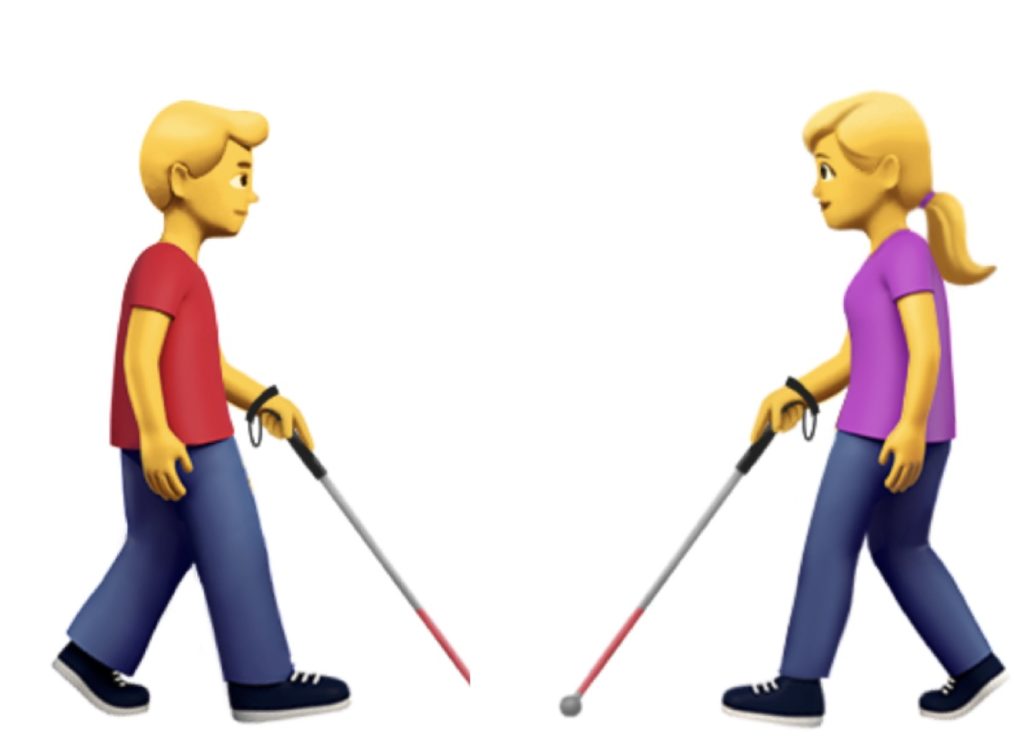How Apple could innovate white canes for sight loss

Technology for a better planet
Apple now has a set of accessibility and related technologies that could logically be used to create all-in-one assistive solutions for people with disabilities. Take the white cane so often used by people with sight loss, for example. What could Apple add to that? Quite a lot, I think:
What is a white cane?
According to the RNIB, there are three kinds of white cane:
- Symbol cane: This is used to signal that you are blind or partially sighted. It’s useful on public transport, but isn’t really used to detect obstacles.
- Guide cane: Held diagonally across the body, a guide cane is used to find obstacles like steps or sidewalk levels.
- Long cane: These are tapped from side to side while a person walks to find obstacles and make way.
How Apple’s existing accessibility features can help those with visual impairment
How can Apple improve these things?
Think about guide and long canes. If you consider what they do, these have one main function: to help people find their way. Now let’s think about how they could be improved.
- Location, Maps, Taptic technology: A GPS sensing device inside a white cane would enable the cane itself to guide its user, telling them which direction they needed to go with a series of taps, just like an Apple Watch.
- Find my iPhone: This would also enable Apple to provide ‘Find My iPhone’ access to detect a lost white stick, including the capacity to make the stick utter a sound when one is requested, to help them be found.
- Gyroscopes and sensors: Built in gyroscopic technolopgy would enable the cane to identify the steepness of hills, while moisture and temperature sensors would enable the cane to alert users if they were about to step into puddles or other kinds of potentially slippery environments.
Consider how an Apple Watch can already empower those with sight loss.
- Proximity sensors: Proximity sensors would work to warn a user if they were about to enter a narrow space, for example a narrow sidewalk, tunnel, elevator or small room. They would then be empowered to navigate such spaces more effectively.
- Infra-red proximity sensors: Situated at the lower portion of the stick, another set of sensors would work to detect small to medium-sized objects that may pose a challenge to the user as they walk. These would also detect steps, sidewalk bumps and humps, potholes and the like.
- Siri inside: Used in conjunction with some form of Bluetooth headset or hearing reinforcement solution, all the preceding data could be shared with a user through voice. Users would also be able to ask for help, change destinations and more.
- Pressure sensor: A pressure sensor at the tip of the white stick would potentially enable the stick itself to identify different forms of terrain – have you ever noticed how different it feels when walking on muddy grass to a tough pavement, or how you need to move differently across gravel and sand? Those differences are amplified for a person who is blind or partially sighted.
- Alarm signal: A personal SOS feature might enable a person who is being attacked or has otherwise encountered an emergency to summon assistance with a simple button press on the stick.
- Camera: A set of LiDAR cameras towards the upper part of the stick could potentially detect ambient challenges, such as sidewalk roadworks, open car doors.
- Movement sensor: Movement sensors inside the stick could conceivably work with Apple’s Activity app to provide accurate fitness and exercise monitoring for users. They could also figure out a person’s average walking speed to deliver accurate ETA estimates when travelling, and (in conjunction with GPS) enhance the accuracy of walking instructions.
Why it matters
Apple already has access to most of the technologies required to create a solution such as this. It doesn’t need to, of course – it’s more than reasonable for third-party product developers to explore this as a potential solution.
It’s not as if solutions like these don’t matter: Over 36 million people worldwide are blind, and over 253 million people are visually impaired according to the International Agency for the Prevention of Blindness. This is expected to reach over 2.25 million in the UK alone by 2020. The effects of aging, diabetes, cataracts and obesity side effects are the biggest causes of the problem.
It is interesting that China, India and Brazil – three of the world’s most rapidly evolving economies – are among the nations with the biggest challenges around low vision.
That means technologies like these could make a significant difference to people’s lives, particularly in the context of local or international non-profit health technology foundations.
.@TheLancet publishes latest Global #Blindness & Vis Impair. prevalence figures by VLEG @bourne_rupert @profhughrt https://t.co/CGDKS7Wsxo pic.twitter.com/M25R1uh3z0
— IAPB (@IAPB1) August 3, 2017



